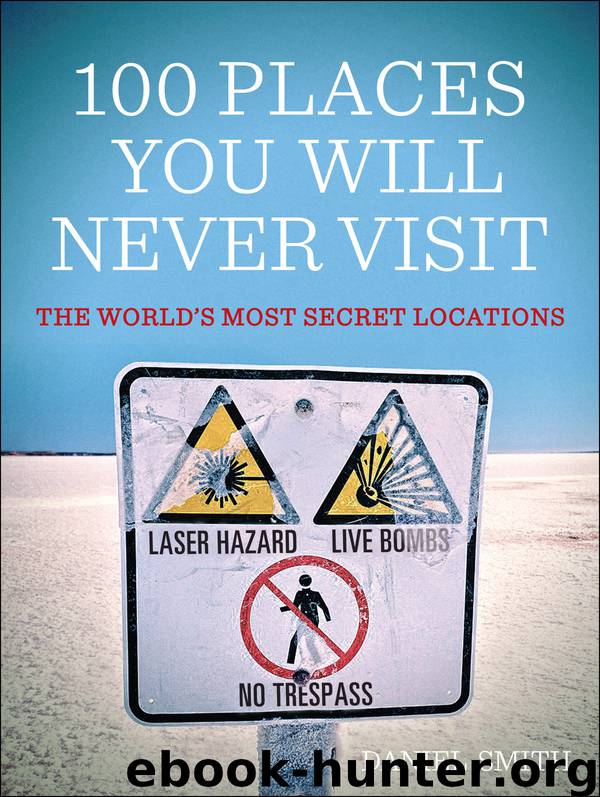100 Places You Will Never Visit by Daniel Smith

Author:Daniel Smith [Smith, Daniel]
Language: eng
Format: epub
Publisher: Quercus
Published: 2014-05-18T16:00:00+00:00
53 The Large Hadron Collider
LOCATION Beneath the Franco-Swiss border
NEAREST POPULATION HUB Geneva, Switzerland
SECRECY OVERVIEW Access restricted: the world’s largest particle accelerator, studying the creation of the Universe.
The Large Hadron Collider (LHC) is a huge scientific instrument that smashes together subatomic particles called protons at speeds close to the speed of light, in order to replicate conditions that occurred in the trillionth of a second after the Big Bang. However, skeptics are concerned that in searching to understand the origins of the Universe, the experiment could bring about its end.
The LHC is run by CERN, the European Organization for Nuclear Research. which authorized funding for the project in 1994. It began operating in 2008, having cost in the region of US$10 billion to build, and consists of a 27-kilometer (17-mile) ring buried 100 meters (330 ft) below ground on the Franco-Swiss border, in an area between the Jura and Alps mountain ranges. The facility makes use of a tunnel previously used for CERN’s Large Electron Positron Collider (LEP), an experiment that was dismantled in 2000.
The big idea behind the LHC is to expand our scientific knowledge beyond that laid out in the Standard Model—a framework that for several decades has provided the most widely accepted explanation for how subatomic particles function. For all its strengths, it has long been realized that the Standard Model leaves many fundamental questions unanswered. The LHC looks to fill some of these gaps by crashing together two beams of “hadrons”—consisting of protons or lead ions—by firing them in opposite directions around the accelerator, the hadrons gaining in energy as they increase in speed with every lap. The powerful magnetic field required to propel these energy-rich particles is provided by 1,750 superconducting magnets kept just a couple of degrees above absolute zero by several hundred thousand liters of liquid helium provided by a series of above-ground refrigeration plants.
Download
This site does not store any files on its server. We only index and link to content provided by other sites. Please contact the content providers to delete copyright contents if any and email us, we'll remove relevant links or contents immediately.
Annapurna by Maurice Herzog(2856)
Liar's Poker by Michael Lewis(2830)
A Forest Journey by John Perlin(2597)
Atlas Obscura by Joshua Foer(2359)
Cuba by Lonely Planet(2199)
The Ogre by Doug Scott(2131)
Photographic Guide to the Birds of Indonesia by Strange Morten;(2099)
Tokyo by Rob Goss(2028)
All Things Reconsidered by Bill Thompson III(1968)
A TIME OF GIFTS by Patrick Leigh Fermor(1858)
DK Eyewitness Top 10 Travel Guides Orlando by DK(1826)
Abbey in America by Murray John A(1815)
The Splendid and the Vile by Erik Larson(1802)
Fatal Storm by Rob Mundle(1795)
Trail Magic by Trevelyan Quest Edwards & Hazel Edwards(1771)
INTO THE WILD by Jon Krakauer(1740)
Top 10 Dubai and Abu Dhabi by DK Travel(1726)
Touching the Void by Joe Simpson(1724)
Lonely Planet Australia by Lonely Planet(1691)
